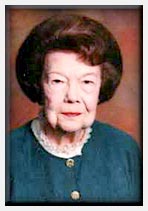Abert's "Day of Anxiety" - September 17, 1845 |
|
 Eloise Lane
Eloise Lane
Lieutenant James William Abert was one of the early American explorers in the region now known as the Texas Panhandle. He was only 25 years old in 1845 when he was ordered to make a reconnaissance through the country of the Kiowa and Comanche. He was to survey the Canadian River from its source to its junction with the Arkansas, taking in his way the Purgatory River and the headwaters of the Washita. Because of his artistic talent, his written reports of everything he encountered were to be illustrated with his drawings. Abert's command, consisting of 33 men, left Bent's Fort, Colorado on August 15. The expedition proceeded over Raton Pass to the headwaters of the Canadian River which was followed through eastern New Mexico. On September 11, Abert's men ascended a huge bluff to find a plain covered with distinctive colored agates. This is the location of the Alibates Flint Quaries. On September 15, the guide who was obligated to go only as far as Bent's Fort on the Canadian, left the expedition. The next morning as Abert was preparing to leave the Canadian and seek the headwaters of the Washita, three friendly Kiowas left the expedition also. Abert's party encountered little obstruction until they had to cross "Arrow Creek"(White Deer Creek) about noon. They reached "Elk Creek" (Red Deer Creek) near present Pampa about two o'clock but found no water. They proceeded downstream toward present Hoover where they made camp and observed great numbers of night hawks darting around in all directions. In his journal for September 17, Abert wrote, “This is the day which we shall look back upon in our wanderings as the day of anxiety." Because the guide and the friendly Kiowas had left the expedition, Abert had to be his own guide as his men crossed a portion of the dreaded Llano Estacado (then known as "The Great American Desert.") The sun was pouring down heat which appeared to rebound from the extended land of the prairie. These reverberations gave rise to mirages where every object appeared distorted and in motion. A rabbit might appear as a dear or an elk, and herds of buffalo might seem like forests of trees. A buffalo skull, with a projecting horn, might seem like an Indian prancing about on his white steed. Expected water was not found, and the tongues of the men seemed to stick to the roofs of their mouths, and their throats were parched with dryness. Jokes and laughs died away until the party moved in dead silence under the scorching sun. The men began to feel that they might have been misled, and tales of treachery, surprise and massacre arose in their minds. A mounted Indian, who looked like a giant, appeared on the horizon. He was followed by other Indians and Abert's men felt that they were surrounded. Although they displayed a white flag, the Indians did not come to them but kept watching every move that they made. They feared that the Indians had laid a plan to decoy them in the broad desert rich in bloody legend. After enduring hours of suspense, the men began to notice slight irregularities in the landscape and soon a long line of bluffs came into view. The suffering animals, made wild by the lack of water, ran in advance of the men in spite of the efforts of their drivers. As they began to descend into the banks of what they thought was the Washita, the men found a. - camping place where water rose through the sand. (In their search for the Washita, Abert's party had traveled too far south and had descended into the valley of the North Fork of the Red River. The point at which they struck the North Fork was in the vicinity of the present town of Lefors in Gray County.) The next day the friendly Kiowas in the area took Abert to their head chief. Little Mountain informed Abert that he was on Buffalo Creek (North Fork) and that Cut-nose Creek (Washita) ran farther north and nearly at right angles. A counsel was called to decide whether Buffalo Creek (North Fork) ran into the Red River of into the "Goo-al-pa"(Canadian). The old men of the council gave directions for a map of the area which was surpris- ingly accurate. With the help of the friendly Kiowas, Abert's expedition found the true Washita and proceeded to rejoin the Canadian and then the Arkansas, arriving at St. Louis on November 12. Although Abert’s reports and explanations were far superior to those of other explorers of his time, his map and journal were filed away and available only to future railroad explorers. Nearly 100 years after Abert's expedition, Dr. H. Bailey Carroll, Professor of History at North Texas Agricultural College at Arlington, became interested when he heard someone remark:"For some unearthly reason, Abert is a `Forgotten Man'." Dr. Carroll traveled hundreds of miles in an effort to retrace the trail made by Abert in 1845, and his detailed notes contain much valuable additional information. The WHITE DEER LAND MUSEUM in Pampa has a copy of "Through the Country of the Comanche Indians in the fall of the year 1845:The Journal of a U.S. Army Expedition led by Lieutenant James W. Abert," edited by John Galvin. The Panhandle-Plains Historical Review for 1941 has "The Journal of Lt.J.W. Abert from Bent's Fort to St. Louis in 1845," edited by H. Bailey Carroll. FOCUS magazine for Spring and Summer, 1995 has a condensed account of Abert's expedition "Through the Texas Panhandle in 1845."

